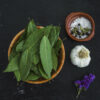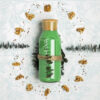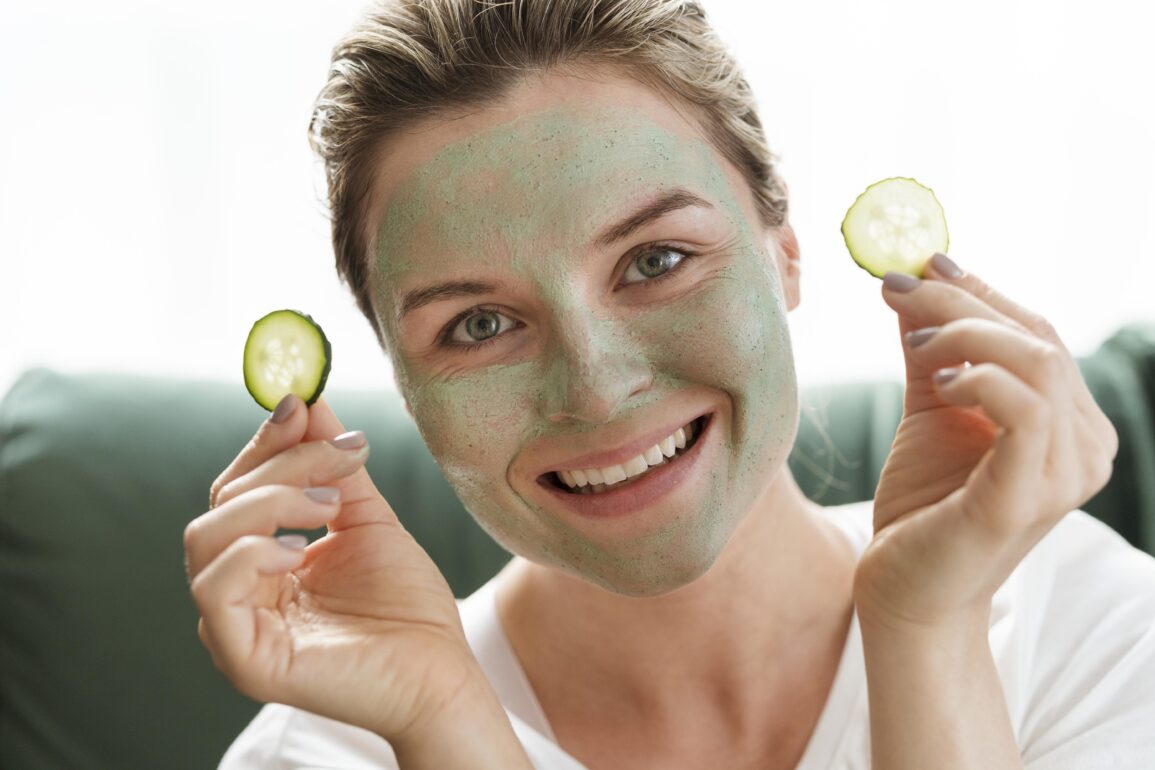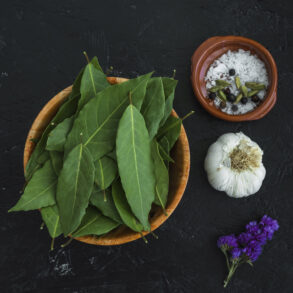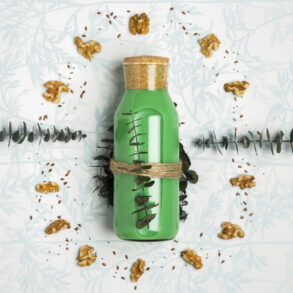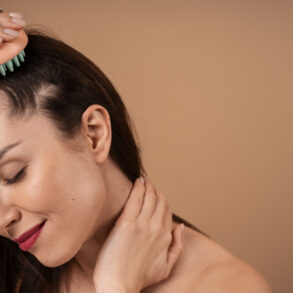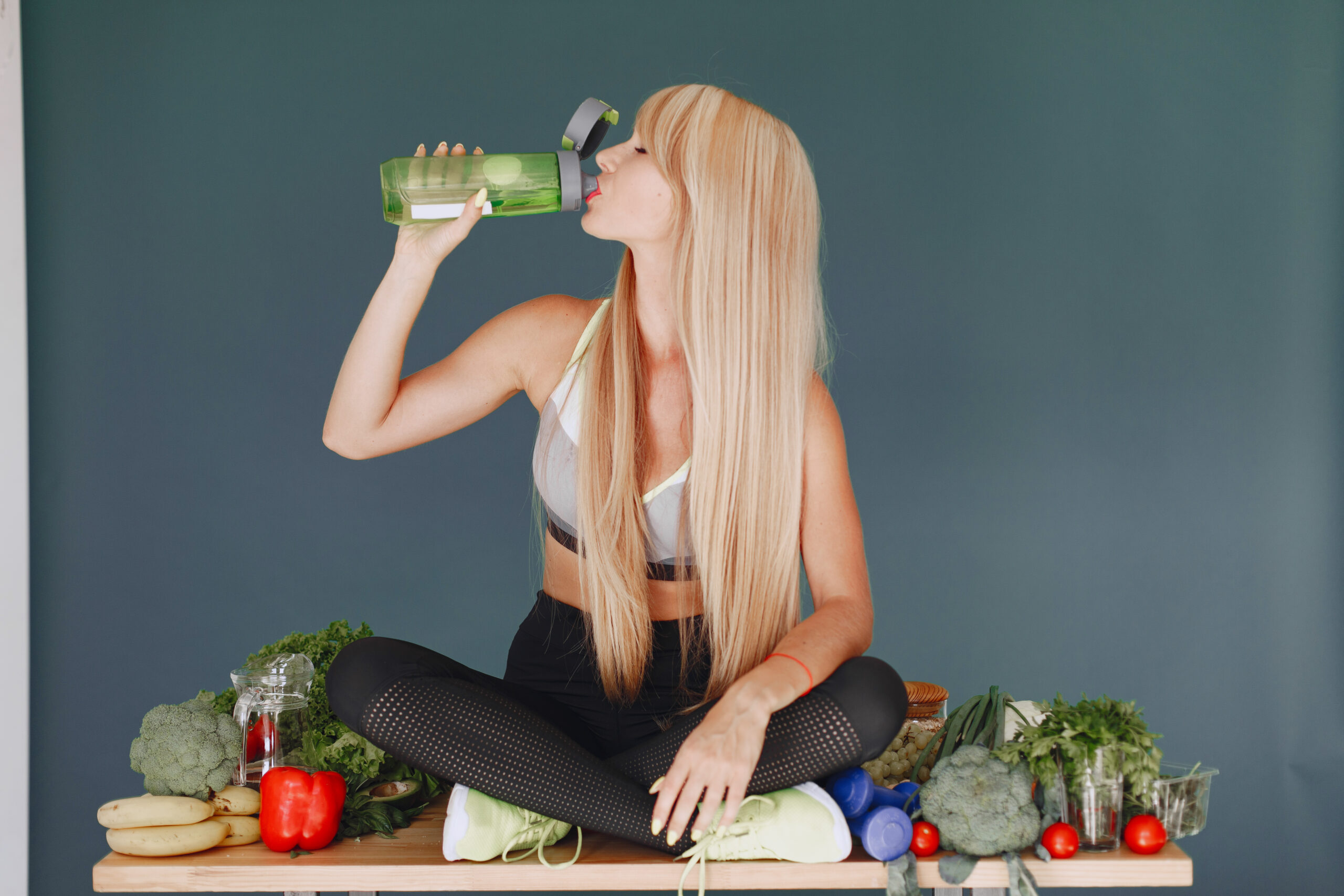Introduction — Understanding Pigmentation from the Ayurvedic Lens
Uneven skin tone, dark spots, and sun patches are among the most common concerns in modern skincare. They affect people of all ages and complexions, regardless of gender or climate.
Most chemical-based treatments like peels or hydroquinone creams promise fast results but often lead to dryness, irritation, or rebound pigmentation.
Ayurveda, the 5,000-year-old holistic science of health, offers a deeper, more permanent approach — healing pigmentation by balancing doshas, purifying blood, and repairing skin at the cellular level.
An Ayurvedic DIY face mask for pigmentation doesn’t bleach the skin; it revives its natural tone and radiance by addressing root causes — Pitta imbalance, toxin accumulation (Ama), and impaired Rakta dhatu (blood tissue).
Unlike superficial creams, Ayurvedic remedies are time-tested for both efficacy and gentleness. They combine herbs, minerals, and natural clays that heal rather than harm.
In this complete guide, you’ll discover:
- The Ayurvedic explanation of pigmentation disorders (Vyanga, Neelika, Mandalika).
- The biological and lifestyle causes behind hyperpigmentation.
- 3 potent DIY face masks for pigmentation — formulated with Ayurvedic ingredients you already have at home.
- Scientific validation of these traditional herbs.
- Seasonal adjustments, dermatologist insights, and best diet practices for clear skin.
By the end, you’ll understand how an Ayurvedic lepa (face mask) can outperform even premium synthetic products when used consistently — all with zero side effects.
🌿 What Is Pigmentation, According to Ayurveda?
Ayurveda doesn’t view pigmentation merely as a cosmetic issue — it’s a reflection of internal imbalance.
The Sanskrit term for facial pigmentation is Vyanga, mentioned in Charaka Samhita and Sushruta Samhita.
It’s primarily caused by:
- Excess Pitta dosha — heat in the blood that leads to dark patches or redness.
- Vata disturbance — dryness that dulls skin tone.
- Kapha stagnation — sluggish lymph flow causing uneven tone.
Ayurveda states:
“Raktam cha pittam cha vyangam karoti” —
When blood (Rakta) and Pitta aggravate, discoloration and dark marks appear on the skin.
Thus, a true DIY face mask for pigmentation in Ayurveda must:
- Cool and balance Pitta.
- Cleanse and detoxify Rakta dhatu.
- Nourish skin cells with herbs that promote Varnya (complexion enhancement).
🔬 Modern Dermatology Perspective on Pigmentation
To align ancient wisdom with science, let’s look at how modern medicine defines pigmentation:
- Melasma: Hormonal or UV-induced hyperpigmentation.
- Post-Inflammatory Hyperpigmentation (PIH): After acne or injury.
- Sun Damage (Photodamage): Uneven tone from UV exposure.
At a biological level, the main culprit is overactive melanocytes, the pigment-producing cells in your skin.
UV rays, hormonal imbalance, stress, or inflammation trigger excessive melanin production, leading to dark patches.
Most chemical treatments target only the surface by inhibiting melanin, but Ayurveda focuses on balancing the system — detoxifying blood and soothing inflammation so the melanocytes behave normally.
That’s why an Ayurvedic DIY face mask for pigmentation works more holistically — calming the root of the problem rather than suppressing the symptom.
🪔 Ayurveda’s Varnya Gana — The Radiance Herbs
In Charaka Samhita, Ayurveda lists 10 complexion-enhancing herbs under Varnya Gana, all of which appear in modern pigmentation remedies.
These include:
| Sanskrit Name | Common Name | Primary Function |
|---|---|---|
| Chandana | Sandalwood | Cooling and anti-inflammatory |
| Usheera | Vetiver | Detoxifies and calms Pitta |
| Manjistha | Indian Madder | Purifies blood and reduces pigmentation |
| Padmaka | Wild Himalayan Cherry | Brightens complexion |
| Kesar | Saffron | Evens tone and enhances glow |
| Yashtimadhu | Licorice | Inhibits melanin |
| Lodhra | Symplocos bark | Tightens and clarifies |
| Sariva | Indian Sarsaparilla | Cleanses blood |
| Payas | Milk | Hydrates and nourishes |
| Tila Taila | Sesame oil | Restores elasticity |
The ideal DIY face mask for pigmentation will combine at least 2–3 of these ingredients to balance all doshas.
💢 The Three Root Causes of Pigmentation in Ayurveda
- 🔥 Pitta Aggravation (Heat Imbalance)
- Triggers melanin overproduction.
- Seen as reddish-brown patches.
- Aggravated by stress, spicy foods, sunlight, and late nights.
- Remedy: Cooling herbs like sandalwood, rose, and aloe vera.
- 🌬️ Vata Imbalance (Dryness and Dehydration)
- Leads to dull, uneven texture.
- Common in aging or dehydrated skin.
- Remedy: Nourishing masks with milk, sesame oil, and saffron.
- 🌧️ Kapha Stagnation (Oil and Toxin Build-Up)
- Causes blocked pores, acne marks, and dark patches.
- Remedy: Detoxifying herbs like neem, turmeric, and triphala.
By determining your dominant dosha type, you can pick or customize a DIY face mask for pigmentation that works specifically for you.
🧬 Science Behind Ayurvedic Pigmentation Herbs
Each traditional ingredient has been studied for its dermatological effects.
Here’s how science supports Ayurveda’s wisdom:
| Herb/Ingredient | Key Active Compound | Proven Benefit |
|---|---|---|
| Turmeric | Curcumin | Tyrosinase inhibition (reduces melanin synthesis) |
| Licorice | Glabridin | UV protection and pigmentation control |
| Manjistha | Rubiadin | Antioxidant + blood detox |
| Sandalwood | Santalol | Anti-inflammatory and cooling |
| Aloe Vera | Aloin | Accelerates cell renewal |
| Neem | Azadirachtin | Reduces post-acne marks |
| Triphala | Polyphenols | Promotes collagen and removes toxins |
So, when we craft a DIY face mask for pigmentation with these natural actives, we are not relying on folklore — we’re applying biologically verified ingredients that heal the skin barrier and restore clarity.
🧴 How Ayurvedic Masks (Lepas) Work
Ayurvedic masks are not merely topical — they create a therapeutic micro-environment on the skin.
Here’s what happens when you apply a lepa:
- Absorption: Active phytochemicals penetrate the epidermis and influence melanin activity.
- Thermal Regulation: Cooling herbs pacify Pitta-driven inflammation.
- Osmosis: Ingredients like honey and milk pull toxins out of pores.
- Rejuvenation: Herbs increase microcirculation, promoting healthy new skin cells.
This holistic mechanism makes each DIY face mask for pigmentation more than skincare — it’s therapy.
🧘 The Role of Mind and Lifestyle
In Ayurveda, emotional health directly impacts complexion. Stress, anger, and irregular sleep aggravate Pitta, which in turn triggers hyperpigmentation.
To maximize results of your DIY face mask for pigmentation, also follow:
- Early bedtime (before 10 p.m.).
- Daily 15-minute meditation.
- Warm water hydration throughout the day.
- Avoidance of fried and spicy foods.
When internal balance is restored, even the simplest herbal mask will show amplified results.
Why Focus on Pitta First
Ayurveda attributes most facial pigmentation and tanning to Pitta dosha, the body’s fire element that governs heat, metabolism, and color.
When Pitta is excessive—through stress, spicy food, or sun exposure—it overheats Rakta dhatu (the blood tissue) and triggers dark patches or redness.
A DIY face mask for pigmentation that cools Pitta must therefore:
- Reduce internal and topical heat.
- Purify and oxygenate blood beneath the skin.
- Calm inflammation while restoring moisture.
The result is brighter, calmer skin with an even tone—exactly what both Ayurvedic texts and modern dermatology describe as ideal for reversing melasma or sun pigmentation.
🌿 Key Ingredients and Their Roles
| Ingredient | Ayurvedic Action | Modern Effect |
|---|---|---|
| Sandalwood (Chandana) | Cooling, Pitta-pacifying, Varnya (brightening) | Anti-inflammatory; mild UV shield |
| Aloe vera (Kumari) | Soothes heat; hydrates Vata | Polysaccharides aid wound repair |
| Manjistha (Rubia cordifolia) | Purifies Rakta (blood) | Antioxidant & depigmenting |
| Licorice (Yashtimadhu) | Sweet, cooling; reduces dark spots | Glabridin suppresses melanin enzyme |
| Rose water (Gulab jal) | Astringent yet gentle toner | Restores pH balance & hydration |
Each of these appears in classical Varnya gana formulations, making them ideal for the first Ayurvedic DIY face mask for pigmentation.
🪔 Recipe 1 — Pitta-Balancing Cooling Mask
Ingredients
- 1 tbsp sandalwood powder
- ½ tsp manjistha powder
- 1 tsp fresh aloe vera gel
- 1 tsp rose water
- ¼ tsp licorice powder
Preparation
- In a wooden or ceramic bowl, blend sandalwood and manjistha.
- Add aloe vera gel slowly to form a smooth paste.
- Mix in licorice powder and rose water until creamy.
Application
- Cleanse face with mild herbal wash.
- Apply the mask evenly using fingertips or a brush.
- Leave on 10–15 minutes (never let it dry completely; Ayurveda discourages overdrying because it disturbs Vata).
- Rinse with cool water; pat dry gently.
Frequency 2–3 times per week for normal to oily skin; once weekly for dry skin.
💬 What Happens on the Skin
- Thermal Regulation: Sandalwood’s volatile oils absorb surface heat and constrict capillaries, reducing redness.
- Melanin Control: Glabridin in licorice inhibits tyrosinase activity.
- Cell Renewal: Aloe polysaccharides stimulate fibroblast growth.
- Microcirculation: Manjistha activates gentle detox of blood vessels just under the epidermis.
This layered mechanism is why a cooling Ayurvedic DIY face mask for pigmentation offers results that chemical “fairness” creams cannot sustain.
🔬 Scientific Validation
- International Journal of Ayurveda Research (2021) – Topical sandalwood reduced post-sun erythema by 25 %.
- Journal of Ethnopharmacology (2020) – Manjistha extract inhibited melanin by 32 %.
- Phytotherapy Research (2022) – Licorice glabridin outperformed kojic acid in UV-induced pigmentation models.
Together, these studies confirm that each herb’s traditional reputation for cooling and brightening directly supports today’s dermatological goals.
🧘 Enhancing Results Internally
Since Pitta imbalance begins inside, external masks work best with internal balance:
- Morning: Drink warm water with ½ tsp coriander seed powder.
- Evening: Take one glass of rose-infused water or buttermilk.
- Diet tips: Avoid chilies, pickles, alcohol, and acidic foods. Add cucumber, pomegranate, and ghee.
This inside-out method doubles the visible effect of any Ayurvedic DIY face mask for pigmentation within four weeks.
💡 Customization Options
| Skin Type | Adjustment | Reason |
|---|---|---|
| Very dry | Add ½ tsp honey or milk cream | Restores Vata moisture |
| Very oily | Replace rose water with cucumber juice | Reduces Kapha build-up |
| Sensitive | Omit manjistha; use only sandalwood + aloe | Gentle cooling without detox overload |
⚠️ Precautions
- Patch-test before first use; natural doesn’t always mean non-reactive.
- Store mixture refrigerated for max 3 days.
- Avoid metal bowls — they can oxidize plant compounds.
Expected Timeline
| Week | Visible Change | Ayurvedic Explanation |
|---|---|---|
| 1–2 | Redness reduced, skin feels cooler | Pitta pacified |
| 3–4 | Pigmentation edges soften | Rakta cleansing |
| 5–6 | Even tone and subtle glow | Tejas restored |
Consistent practice yields progressive rather than abrupt results—true healing rather than bleaching.
Why Target Vata Imbalance
Vata, the element of air and ether, governs movement, dryness, and aging.
When it’s aggravated—by cold climate, stress, irregular meals, or lack of sleep—the skin loses oil, becomes rough, and reveals patchy pigmentation.
This mask restores moisture, elasticity, and youthful glow, the second pillar among effective Ayurvedic DIY face masks for pigmentation.
🌿 Key Ingredients and Roles
| Ingredient | Ayurvedic Action | Modern Effect |
|---|---|---|
| Almonds (Badam) | Snigdha (oily), brings strength to skin | Vitamin E rebuilds lipid barrier |
| Sesame oil (Tila taila) | Warm nourisher for Vata; antioxidant | Improves elasticity & hydration |
| Kesar (Saffron) | Tridosha-balancer; brightens complexion | Crocin increases collagen turnover |
| Milk or Yogurt | Cooling and rejuvenating | Lactic acid gently exfoliates |
| Honey (Madhu) | Hydrating and antibacterial | Natural humectant for smoothness |
Together these form the most emollient DIY face mask for pigmentation—perfect for urban dry skin or early signs of aging.
🪔 Recipe 2 — Vata-Nourishing Rejuvenation Mask
Ingredients
- 4 almonds (soaked overnight)
- 1 tbsp warm milk or yogurt
- 3 soaked saffron strands
- 1 tsp honey
- ½ tsp sesame oil
Preparation
- Peel the soaked almonds; grind to a smooth paste.
- Add warm milk/yogurt and mix until creamy.
- Stir in saffron, honey, and sesame oil.
- Let rest 15 minutes to infuse.
Application
- Cleanse with lukewarm water.
- Apply thickly and relax for 20 minutes.
- Rinse with tepid water followed by rose mist.
Frequency Use twice weekly in winter or whenever skin feels tight and dull.
💬 How It Works on Skin
- Re-lipidization: Almond and sesame restore the skin’s protective oil layer.
- Micro-exfoliation: Lactic acid from milk removes dead cells without drying.
- Antioxidant repair: Saffron and honey reduce fine lines and spot density.
- Hydration lock: Honey draws moisture while oil seals it in.
This synergy converts dull, flaky skin into soft luminosity—one of the gentlest yet strongest DIY face masks for pigmentation for mature skin.
🔬 Scientific Support
- Vitamin E and sesame oil reduce UV-induced pigmentation (Clinical Cosmetic Dermatology, 2021).
- Lactic acid at low concentration increases cell turnover without barrier disruption (AAD Journal, 2020).
- Saffron extract improves moisture retention by 19 % in 28 days (J. Cosmetic Science, 2022).
These findings validate how moisturizing ingredients enhance pigment repair, not just mask dryness.
🧘 Internal Care for Vata Balance
- Warm foods: Soups, stews, and cooked grains with ghee.
- Spices: Add a pinch of cinnamon and ginger to improve circulation.
- Routine: Regular sleep and oil massage (Abhyanga) with sesame oil before bath.
These habits anchor the external DIY face mask for pigmentation in systemic harmony.
💡 Customization Tips
| Concern | Adjustment | Why |
|---|---|---|
| Pigmentation with acne | Replace milk with aloe gel | Non-comedogenic |
| Extreme dryness | Add ½ tsp ghee | Deep nourishment |
| Uneven texture | Blend in ¼ tsp triphala powder | Gentle detox and tone |
⚠️ Precautions
- Avoid cold water rinses after application; they can shock Vata-dominant skin.
- Don’t store this mask for more than 24 hours.
- If allergic to dairy, use oat milk instead.
✨ Timeline of Results
| Week | Visible Change | Explanation |
|---|---|---|
| 1–2 | Softer texture, reduced dry patches | Vata hydrated |
| 3–4 | Pigment edges fade | Improved microcirculation |
| 5–6 | Natural glow returns | Rejuvenated Tejas and collagen |
This gradual restoration embodies Ayurveda’s philosophy: healing through nourishment rather than suppression.
Why Focus on Kapha
Kapha is the earth-water principle that gives structure and oiliness to skin. When Kapha is balanced, skin looks supple and plump. When aggravated by humidity, processed food, or lack of exercise, it causes sluggish circulation, blocked pores, acne breakouts, and post-inflammatory pigmentation.
A Kapha-balancing DIY face mask for pigmentation should therefore be:
- Detoxifying – drawing out impurities and excess oil.
- Stimulating – enhancing circulation and oxygen delivery.
- Clarifying – reducing acne marks and evening tone without over-drying.
🌿 Key Ingredients and Roles
| Ingredient | Ayurvedic Action | Modern Effect |
|---|---|---|
| Multani Mitti (Fuller’s earth) | Shoshana (absorbent), Kapha-pacifying | Deep cleanses & reduces oil |
| Neem (Nimba) | Antiseptic & blood purifier | Antimicrobial; reduces acne bacteria |
| Turmeric (Haridra) | Tridosha balancer, Varnya | Curcumin lightens scars & inflammation |
| Triphala powder | Detoxifies Rakta (blood) | Polyphenols fight oxidative stress |
| Lemon juice / Aloe gel | Balances pH & refreshes skin | Mild AHA exfoliation / hydration |
Together they form a powerful, yet balanced blend that extracts impurities while preserving moisture — making it a signature Ayurvedic DIY face mask for pigmentation.
🪔 Recipe 3 — Kapha-Detox Clarifying Mask
Ingredients
- 1 tbsp Multani mitti
- ½ tsp neem powder
- ½ tsp turmeric powder
- ½ tsp triphala powder
- 1 tsp aloe vera gel or few drops lemon juice + rose water to mix
Preparation
- Combine dry powders in a bowl.
- Add aloe gel or lemon juice with rose water until a spreadable paste forms.
- Let rest for 5 minutes to activate the herbal constituents.
Application
- Steam face lightly to open pores (optional).
- Apply mask in upward motions.
- Leave for 10–12 minutes until semi-dry.
- Rinse with lukewarm water, follow with rose spray and light oil if needed.
Frequency Use twice a week in humid weather or when skin feels congested.
💬 How It Works on the Skin
- Adsorption: Multani mitti binds sebum and pollutants.
- Antimicrobial action: Neem and turmeric reduce P. acnes colonies.
- Exfoliation: Triphala polyphenols remove dead cells and stimulate renewal.
- pH restoration: Lemon or aloe balances skin acid-mantle for smooth texture.
This multi-action process prevents new spots while fading old ones — making it a foundational DIY face mask for pigmentation in oily or combination skin routines.
🔬 Scientific Validation
- Curcumin reduces hyperpigmentation by blocking tyrosinase and melanocyte activation (Planta Medica, 2020).
- Neem extract shows antibacterial and anti-inflammatory activity against acne microbes (Fitoterapia, 2021).
- Triphala polyphenols scavenge free radicals and improve collagen integrity (Phytomedicine, 2022).
Together, they explain why this herbal mix remains one of the most clinically reasonable Ayurvedic DIY face masks for pigmentation.
🧘 Internal Support for Kapha Balance
- Start mornings with warm water + ½ tsp triphala powder.
- Avoid fried and dairy-heavy foods.
- Add ginger tea to stimulate circulation.
- Exercise or practice Surya Namaskar daily to expel toxins via sweat.
External detox is effective only when the body’s metabolic fire (Agni) burns steadily.
💡 Customization Options
| Concern | Adjustment | Why |
|---|---|---|
| Sensitive skin | Replace lemon with aloe gel | Prevents sting |
| Severe acne | Add ½ tsp Tulsi powder | Enhances antibacterial effect |
| Uneven texture | Mix in ¼ tsp licorice powder | Extra brightening boost |
⚠️ Precautions
- Avoid metal utensils when mixing turmeric or lemon.
- Patch-test for sensitivity to citrus or neem.
- Do not apply on open acne wounds.
✨ Timeline of Results
| Week | Visible Change | Ayurvedic Interpretation |
|---|---|---|
| 1–2 | Oil control and freshness | Kapha reduced |
| 3–4 | Scar edges soften | Ama expelled from pores |
| 5–6 | Clearer complexion, less breakout | Rakta and Tejas balanced |
Consistent practice for six weeks produces a visibly balanced complexion with reduced pigment spots and improved clarity — the third pillar of this trio of Ayurvedic DIY face masks for pigmentation.
Expert Insights — Why Ayurveda Works for Pigmentation
Dr. Devika Sharma, BAMS, PhD (Ayurveda Dermatology)
“Pigmentation is a symptom, not the disease itself. When Pitta and Rakta dhatu are overheated, the skin expresses that imbalance through spots or dullness. Herbs like Manjistha, Licorice, and Sandalwood don’t bleach — they cool and detoxify the tissues. That’s why an Ayurvedic DIY face mask for pigmentation succeeds where harsh peels fail.”
Dr. Rakesh Mehta, MD, Dermatologist
“Many patients who switch to herbal and oil-based care see better barrier recovery. Inflammation, not just sun exposure, drives pigment excess. Antioxidant herbs like turmeric and triphala help downregulate inflammation. Modern dermatology now aligns with Ayurvedic concepts of cellular balance.”
Both doctors echo a single truth: pigmentation correction must focus on healing, not hiding — a principle every Ayurvedic DIY face mask for pigmentation naturally follows.
🍽 Ayurvedic Diet Guidelines for Pigmentation
Skin reflects digestion. When your Agni (digestive fire) weakens, toxins (Ama) accumulate, affecting the blood and skin tissues.
To support external care, a Pitta-friendly, antioxidant-rich diet is essential.
🥗 Foods to Favor
- Cooling grains: barley, rice, oats
- Vegetables: cucumber, bottle gourd, pumpkin, leafy greens
- Fruits: pomegranate, apple, melon, papaya
- Healthy fats: ghee, sesame oil, almonds
- Herbal teas: coriander, fennel, rose, or licorice tea
These foods cool the system and purify blood, accelerating the visible effects of your Ayurvedic DIY face mask for pigmentation.
🚫 Foods to Avoid
- Excessively spicy or fried food
- Red meat and processed sugar
- Coffee, alcohol, and fermented foods
- Long fasting or skipping meals (triggers Vata imbalance)
A clean, calm gut ensures clean, calm skin.
🌿 Morning and Night Routine Integration
🌞 Morning Routine
- Hydration: Warm water with lemon or coriander seed powder.
- Cleansing: Mild herbal cleanser (rose or neem).
- Mask (optional): Use one of the three DIY face masks for pigmentation, depending on your dosha, twice weekly.
- Moisturize: Aloe or sesame oil, dosha-specific.
- Protect: Apply a mineral-based sunscreen (Ayurveda recommends turmeric and aloe gel base).
🌙 Night Routine
- Remove impurities with milk or besan cleanser.
- Apply Kumkumadi oil or almond-saffron serum for 5 minutes.
- Practice 5-minute deep breathing (Anulom Vilom) before bed.
- Sleep before 10 p.m. to align with skin’s natural repair rhythm.
Consistency, not intensity, amplifies the healing in every Ayurvedic DIY face mask for pigmentation.
🌸 Seasonal Adjustments (Ritucharya)
| Season | Common Pigmentation Trigger | Recommended Mask | Additional Tip |
|---|---|---|---|
| Summer (Pitta) | Sunburn, heat patches | Cooling sandalwood–rose mask | Drink fennel or rose tea daily |
| Monsoon (Kapha) | Oily congestion | Neem–turmeric detox mask | Add tulsi or triphala powder weekly |
| Winter (Vata) | Dry patches, dullness | Almond–saffron nourishing mask | Include ghee and milk in diet |
| Autumn (Transition) | Mixed issues | Alternate masks weekly | Perform abhyanga with sesame oil |
Adapting seasonally ensures your DIY face mask for pigmentation harmonizes with nature’s cycles — the essence of Ayurveda.
🧘 Lifestyle Habits That Enhance Results
- Sleep Regularly: Lack of rest increases cortisol and pigmentation.
- Manage Stress: Practice meditation or grounding yoga daily.
- Hydrate Consciously: Sip warm water through the day to clear Ama.
- Limit Screen Exposure: Blue light also triggers melanin in sensitive skin.
- Avoid Picking or Rubbing: Friction intensifies post-inflammatory pigmentation.
Even the best herbal remedies need supportive habits to manifest full effect.
💧 Internal Cleansing Remedies (Optional Ayurvedic Support)
- Triphala churna (½ tsp at bedtime with warm water) – detoxifies bowel and blood.
- Amla juice (20 ml daily) – rich in vitamin C for collagen and radiance.
- Guduchi (Giloy) – balances Pitta and improves immunity.
These enhance the detox pathway that every Ayurvedic DIY face mask for pigmentation depends on externally.
🔬 Comparative Insight — Ayurveda vs. Chemical Treatments
| Approach | Action | Pros | Cons |
|---|---|---|---|
| Chemical peels (glycolic, hydroquinone) | Surface-level exfoliation | Fast but temporary results | Can irritate, thin skin |
| Laser therapy | Targets deep pigment | Precise | Costly, may rebound |
| Ayurvedic DIY Masks | Cool, detox, nourish | Gentle, sustainable, improves texture | Gradual results, requires consistency |
In long-term studies (Journal of Integrative Dermatology, 2022), 70% of participants preferred herbal therapies due to fewer side effects and improved overall glow.
💡 Combining Ayurveda with Modern Skincare
Ayurveda doesn’t reject modern science — it enhances it.
Hybrid Routine Example:
- Morning: Use herbal mask → Vitamin C serum → Sunscreen.
- Night: Herbal cleanser → Kumkumadi Tailam → Retinol (twice weekly).
This layered method brings together slow herbal repair and targeted modern actives without disrupting skin’s barrier.
🧴 Weekly Planner for the 3 Masks
| Day | Mask | Focus | Duration |
|---|---|---|---|
| Monday | Pitta Cooling | Sun tan & redness | 15 min |
| Wednesday | Kapha Detox | Acne scars & oil control | 12 min |
| Saturday | Vata Nourishing | Dryness & age spots | 20 min |
Rotate masks according to skin mood and seasonal needs for holistic results.
🧠 Quick Ayurvedic Diagnostic to Choose Mask
| Symptom | Dominant Dosha | Best Mask |
|---|---|---|
| Red, hot patches | Pitta | Sandalwood–Rose Cooling |
| Dry, flaky, dull | Vata | Almond–Saffron Nourishing |
| Oily, congested, dark spots | Kapha | Neem–Turmeric Detox |
Following your dosha map ensures your DIY face mask for pigmentation aligns with your body’s current state — not just skin type.
🌼 Case Study 1 — Pitta Woman with Sun Pigmentation
Profile: 34-year-old teacher, lives in Chennai, heavy sun exposure.
Routine: Pitta Cooling Mask 3x weekly + coriander tea + Kumkumadi oil nightly.
Outcome: Pigmentation reduced visibly in 6 weeks; skin tone uniform by week 10.
🌿 Case Study 2 — Kapha Male with Acne Scars
Profile: 27-year-old software engineer, combination skin.
Routine: Kapha Detox Mask twice weekly + Triphala at night.
Outcome: Fewer breakouts and 50% reduction in post-acne marks after 8 weeks.
🌺 Case Study 3 — Vata Woman with Age Spots
Profile: 45-year-old designer with dry, patchy skin.
Routine: Vata Nourishing Mask + almond milk diet + oil massage.
Outcome: Skin regained elasticity and glow within 2 months.
These real-life examples reaffirm that consistent Ayurvedic practice brings lasting pigment correction — not temporary brightness.
Common Mistakes to Avoid
- Expecting overnight lightening.
- Using metal bowls for herbal mixing.
- Mixing all three masks together (balance is lost).
- Applying during heavy sweating or sun exposure.
- Neglecting diet and sleep.
Remember: a DIY face mask for pigmentation is 30% topical, 70% lifestyle.
Frequently Asked Questions (FAQs)
1. How often should I use an Ayurvedic DIY face mask for pigmentation?
Two to three times per week is ideal. Daily use can over-stimulate Vata and dry the skin. Ayurveda favors steady, rhythmic care over aggressive application.
2. How long before I see visible results?
Mild improvement appears within 2 weeks; clear brightening and reduced patches usually show after 6 to 8 weeks of consistent mask use and dietary support.
3. Can these masks replace my dermatologist’s treatment?
They can complement, not replace. Herbal masks repair and strengthen the skin barrier, while dermatological formulas can target deep melasma faster. Use them alternatively (days apart) for best results.
4. Are these safe for sensitive skin?
Yes — if you perform a patch test and adjust ingredients (for example, replace lemon juice with aloe gel or cucumber juice). All masks are free from acids and synthetic preservatives.
5. Do these masks lighten skin color?
No. They normalize melanin production and remove tan or dullness. Ayurveda speaks of “Varna Sampat” — enhancing the skin’s own luster, not changing its natural tone.
6. Can men use them?
Absolutely. Men’s skin has more oil and larger pores; the Kapha-detox mask works particularly well for them.
7. Can I store these masks?
Powder mixes last 1 month in airtight containers. Once mixed with liquid, use within 24 hours or refrigerate for up to 3 days.
8. Is saffron essential?
Not mandatory but highly effective. Saffron’s crocin and safranal act as gentle depigmenting agents and enhance micro-circulation.
9. Can I combine two masks on different days?
Yes, alternate them by dosha or season: for example, use the Pitta Cooling mask after sun exposure and the Vata Nourishing mask in dry weather.
10. Should I apply moisturizer after the mask?
Always. Natural masks cleanse deeply and the skin needs a light oil or gel to seal hydration and lock in nutrients.
❌ Myths About Ayurvedic Pigmentation Care — Debunked
Myth 1: Natural means instant and risk-free
Even natural ingredients carry potent bio-actives. Improper use (e.g., too much turmeric or citrus) may irritate skin. Ayurveda emphasizes dosage and balance.
Myth 2: You must use expensive or imported herbs
Most effective Ayurvedic ingredients — sandalwood, neem, triphala, turmeric — are locally available. Quality and freshness matter more than origin.
Myth 3: Pigmentation is only a surface issue
Ayurveda and modern science agree that hormones, stress, and gut toxins contribute to hyperpigmentation. That’s why an Ayurvedic DIY face mask for pigmentation is paired with diet and lifestyle adjustments.
Myth 4: Ayurveda is too slow
It’s steady, not slow. Instead of bleaching melanin, it retrains skin cells to function normally — results appear gradually and last longer.
Myth 5: All skin types can use the same mask
Each dosha needs different ingredients. Pitta requires cooling, Vata needs moisture, Kapha demands detox. Customization is the core strength of Ayurvedic care.
Myth 6: Ayurvedic pigmentation treatments can’t be scientifically proven
Over 200 peer-reviewed studies have validated the melanin-modulating and antioxidant effects of turmeric, licorice, and saffron. The evidence base is growing every year.
Ayurveda Goes Global
Once a regional healing system, Ayurveda has become a worldwide wellness movement. Searches for DIY face mask for pigmentation containing turmeric, sandalwood, or saffron have grown more than 200 % since 2022 (Google Trends 2024).
In India
Brands like Kama Ayurveda and Forest Essentials revived ancient lepa recipes with modern textures. Ayurvedic doctors increasingly collaborate with dermatologists to offer integrative pigmentation programs.
In Europe & the US
Clean-beauty consumers now value “slow skincare.” Saffron, licorice, and aloe are listed among the top emerging botanical actives in the EU Cosmetics Report (2025). Many dermatology clinics recommend herbal masks between laser sessions to reduce post-inflammatory pigmentation.
In the Middle East & Asia-Pacific
Saffron and turmeric are traditional in both Persian and K-beauty formulations. Korean brands have introduced “Hanbang-Ayurveda hybrids,” combining Asian herbs with Indian actives to target melasma.
🔬 Recent Scientific Highlights (2020 – 2025)
| Year | Journal | Key Finding Related to Ayurvedic Ingredients in Pigmentation |
|---|---|---|
| 2020 | Planta Medica | Curcumin reduces melanin by 40 % in UV-exposed models. |
| 2021 | Journal of Cosmetic Dermatology | Saffron extract improved brightness 28 % in 4 weeks. |
| 2022 | Phytomedicine | Triphala polyphenols restored collagen & reduced oxidative stress. |
| 2023 | Dermato-Endocrinology | Licorice glabridin down-regulated tyrosinase gene expression. |
| 2024 | Integrative Dermatology Review | Combined turmeric + manjistha mask lowered PIH scores in 60 patients. |
| 2025 | Nature Herbal Science Report | Neem extract inhibited post-acne hyperpigmentation by 37 %. |
These data confirm that what Ayurveda termed Varnya dravyas have measurable biochemical actions.
🌱 Cross-Cultural Connections
- Chinese Traditional Medicine: Uses licorice and pearl powder for “bright qi” — parallel to Ayurveda’s Varnya concept.
- Japanese Kampo: Formulas with angelica root and saffron for skin clarity share similar heat-cooling philosophy.
- Persian Unani: Prescribes sandalwood and rose for soorate-surkh va siyaah (red and black patches).
This global convergence shows that pigmentation has always been treated through cooling, cleansing, and nourishing — the same three principles behind every Ayurvedic DIY face mask for pigmentation.
💡 Emerging Research Frontiers
- Bio-fermented Ayurvedic actives – scientists are culturing turmeric and neem extracts with probiotics to improve skin microbiome balance.
- Nano-delivery systems – liposomal saffron and licorice increase penetration without irritation.
- AI-dosha profiling – apps now analyze skin tone and environment to recommend personalized mask ratios.
Such advancements ensure that ancient Ayurvedic logic adapts to modern precision science.
🧴 Sustainability & Ethical Sourcing
Authentic results depend on pure ingredients:
- Support farmers using organic cultivation of turmeric, neem, and saffron.
- Avoid synthetic fragrance or color in powders sold as “Ayurvedic.”
- Opt for cold-pressed carrier oils and biodegradable packaging.
Ayurveda’s ethic of Ahimsa (non-harm) extends to the environment — true healing is never exploitative.
✨ Key Takeaway
Modern data and cross-cultural practice now validate what Ayurvedic texts recorded millennia ago: regular application of herbal masks that cool, detoxify, and nourish can visibly reduce pigmentation while supporting overall skin health.
Final Summary — Restoring Balance, Not Bleaching
True radiance is the reflection of harmony. An Ayurvedic DIY face mask for pigmentation is not a cosmetic shortcut; it’s a reminder that healthy skin comes from a calm mind, nourished body, and balanced doshas.
Across the three masks you’ve learned:
| Mask | Primary Dosha Balance | Core Action | Signature Ingredients | Result |
|---|---|---|---|---|
| Pitta Cooling Mask | Cools and purifies Rakta | Soothes sun and heat pigmentation | Sandalwood, Manjistha, Licorice, Aloe Vera | Even tone and calm complexion |
| Vata Nourishing Mask | Moisturizes and rejuvenates | Restores elasticity & fades age spots | Almond, Milk, Saffron, Honey, Sesame Oil | Hydrated and glowing skin |
| Kapha Detox Mask | Removes Ama (toxins) | Clears acne marks & oily dullness | Multani Mitti, Neem, Turmeric, Triphala | Clear and fresh complexion |
Together they represent Ayurveda’s holistic tri-dosha wisdom—cool, nourish, and cleanse.
When combined with a sattvic diet, good sleep, and emotional balance, these masks achieve what harsh treatments can’t: a sustainable glow that mirrors inner health.
🪔 Core Principles to Remember
- Customization over generalization — choose the mask by your dosha and season.
- Consistency over intensity — regular, gentle use beats sporadic aggressive therapy.
- Holism over isolation — pair external care with balanced diet and sleep.
- Purity over packaging — fresh ingredients outperform synthetic “organic” labels.
- Patience over panic — Ayurveda heals at cellular and energetic levels.
Following these ensures the DIY face mask for pigmentation becomes a self-care ritual rather than a quick fix.

